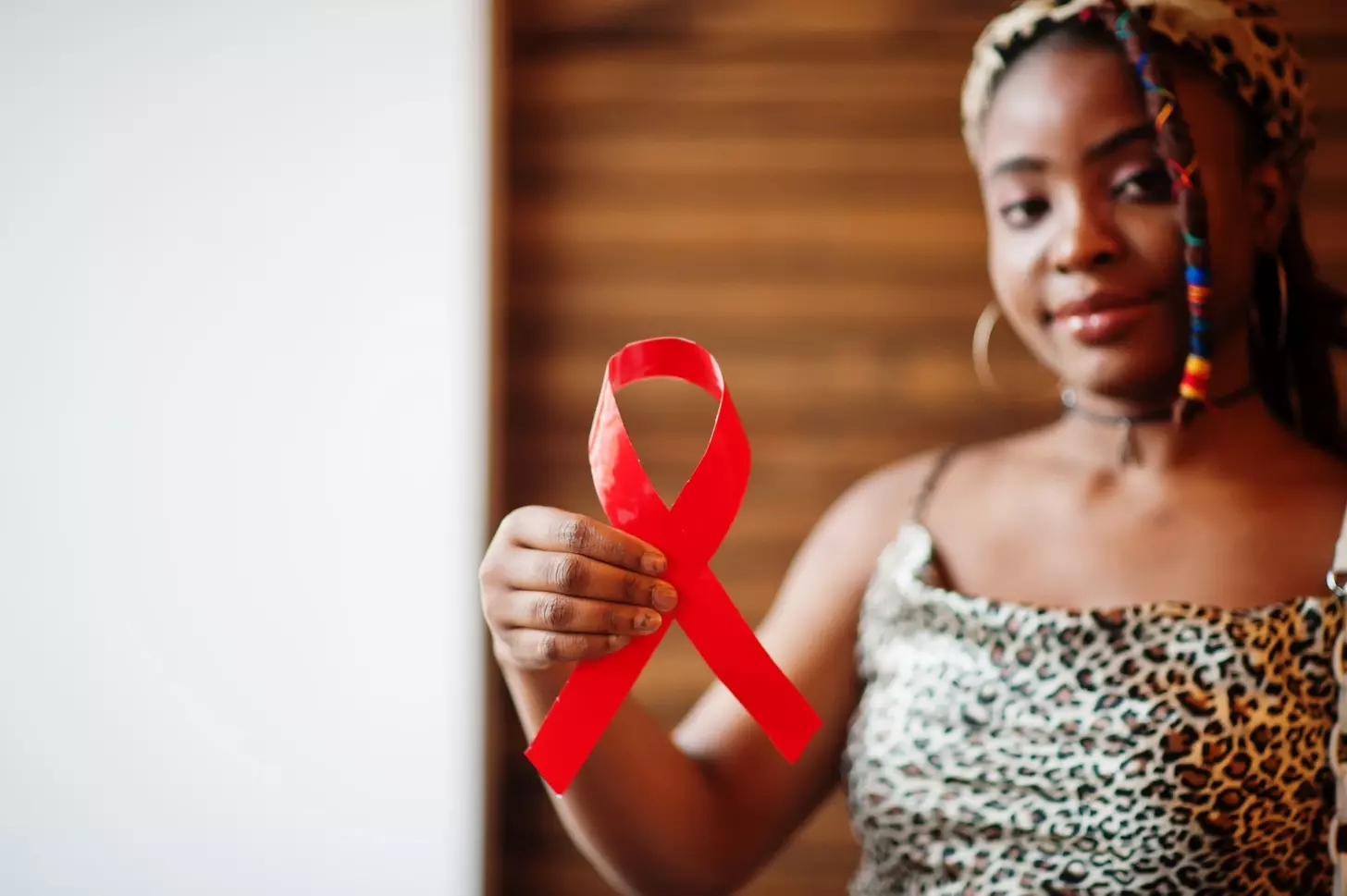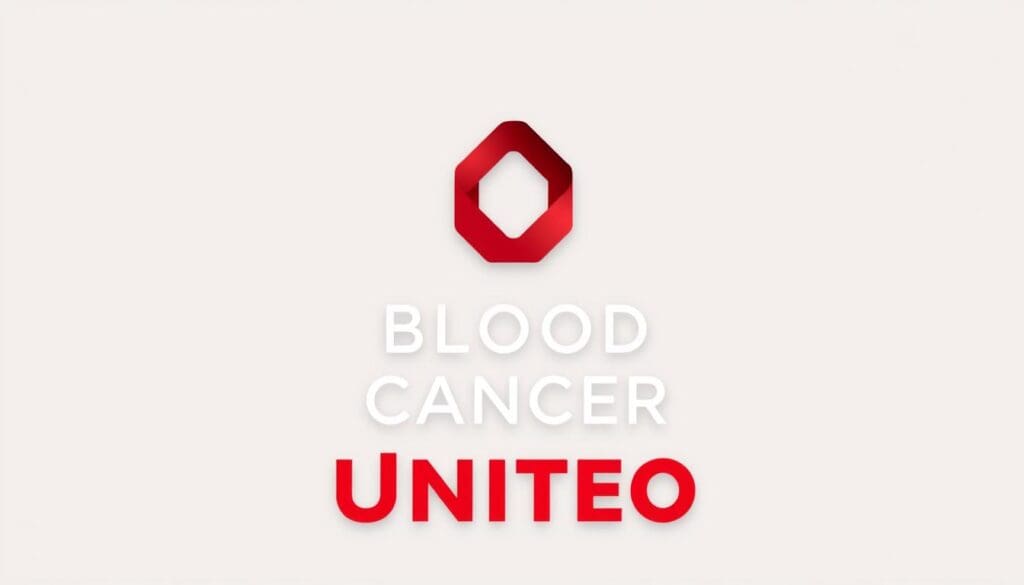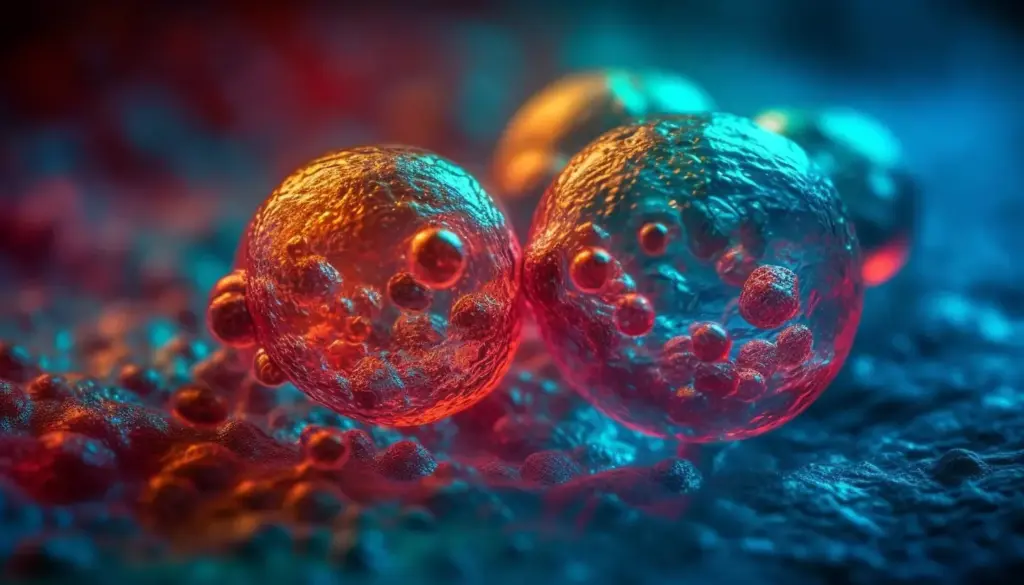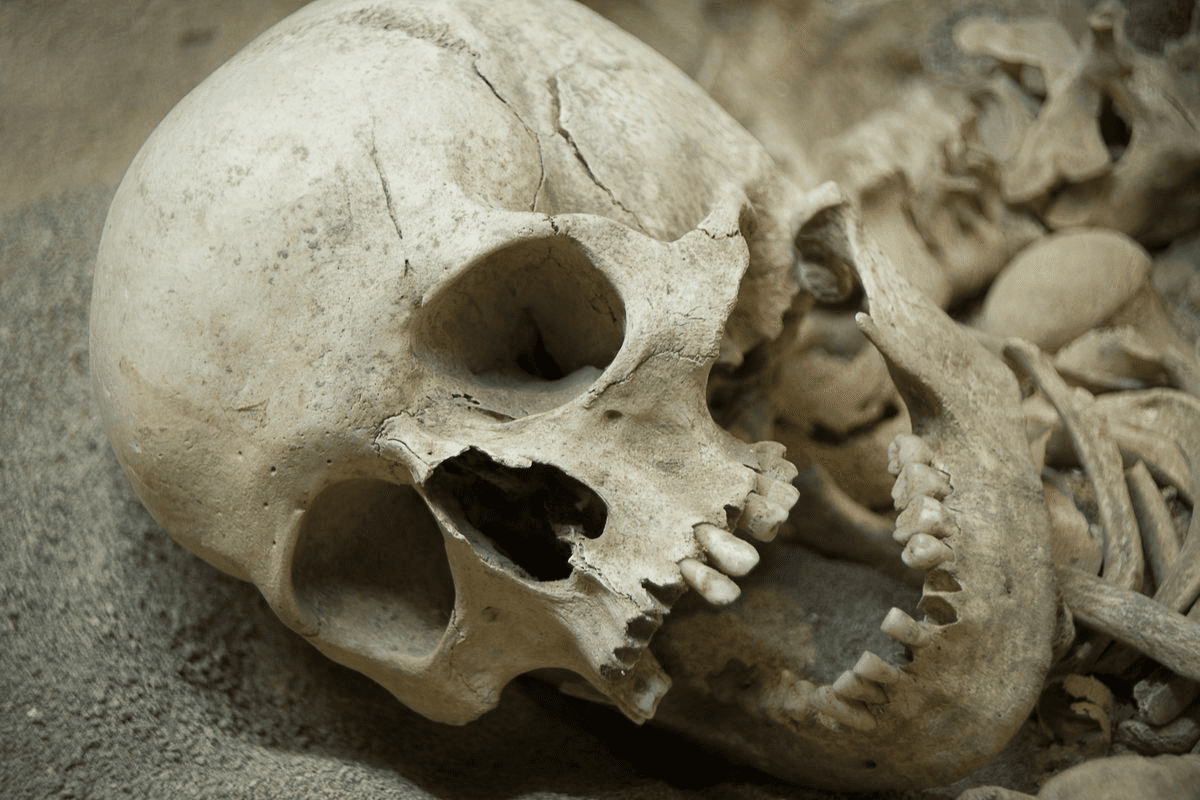Last Updated on November 26, 2025 by Bilal Hasdemir

Blood Cancer United, once known as the Leukemia & Lymphoma Society (LLS), leads in supporting blood cancer patients. It also funds important research.
This organization has a long history and a clear goal: to cure leukemia, lymphoma, Hodgkin’s disease, and myeloma. Blood Cancer United is a key player in patient care and advocacy. It has grown to meet the needs of those with different blood cancers.
The LLS Organization has made a big difference in patients’ lives around the world. Blood Cancer United keeps pushing forward in the battle against these serious diseases.
Key Takeaways
- Blood Cancer United is a leading organization in blood cancer research and patient support.
- The organization was formerly known as the Leukemia & Lymphoma Society (LLS).
- It is dedicated to curing various types of blood cancers.
- Blood Cancer United has a rich history and a strong mission.
- The organization continues to evolve to meet patient needs.
The Transformation from Leukemia & Lymphoma Society to Blood Cancer United
The Leukemia & Lymphoma Society has changed its name to Blood Cancer United. This change shows we now help with all blood cancers, not just leukemia and lymphoma. The rebranding shows our bigger commitment to helping patients and their families with blood cancers.
We have a long history of helping patients and finding new treatments. Our growth into Blood Cancer United means we can help more people. This change helps us serve patients and their families better.
The Organization’s Rich History and Evolution
Started in 1949, the Leukemia & Lymphoma Society (LLS) aimed to cure leukemia, lymphoma, Hodgkin’s disease, and myeloma. We’ve grown, adding more research and support for patients. Our journey includes many important moments, such as:
- Funding research that has led to new treatments for blood cancers.
- Offering support to patients and their families.
- Working for policies that help blood cancer patients get better care.
Understanding the Various Names: LLS, L&L Society, and More
The Leukemia & Lymphoma Society was also known as LLS and L&L Society. Our new name, Blood Cancer United, makes us clearer and more focused. It also shows we support more types of blood cancers now.
Our new name brings:
- Inclusive Naming: Blood Cancer United covers more blood cancers.
- Unified Mission: Our goal is the same: research, support, and advocacy.
- Enhanced Visibility: We hope our new name will attract more supporters.
By changing to Blood Cancer United, we’re ready to make a bigger difference. Our dedication to patients, families, and the medical field remains strong.
Key Fact #1: Blood Cancer All Encompasses Over 100 Different Conditions
Blood Cancer United knows that blood cancer is more than one disease. It’s a group of over 100 conditions. This fact is key for patients and doctors in finding the right treatment and support.
The Vast Spectrum of Blood Cancer Types
Blood cancers vary a lot in symptoms, how they progress, and how they react to treatment. Leukemia affects the blood and bone marrow. Lymphoma mainly hits the lymphatic system. Myeloma targets plasma cells in the bone marrow.
| Type of Blood Cancer | Estimated New Cases in 2025 (US) | Common Subtypes |
|---|---|---|
| Leukemia | 66,890 | Acute Lymphoblastic Leukemia (ALL), Acute Myeloid Leukemia (AML) |
| Lymphoma | 89,070 | Hodgkin Lymphoma, Non-Hodgkin Lymphoma (NHL) |
| Myeloma | 35,730 | Multiple Myeloma, Smoldering Myeloma |
Common Misconceptions About Blood Cancers
Many people think all blood cancers are the same. But leukemia, lymphoma, and myeloma are very different.
Some also believe blood cancers are rare. But they make up nearly 10% of all new cancer cases in the US. This makes them a big public health issue.
Knowing the real nature and variety of blood cancers helps us support patients better. It also helps fund research and push for better treatments and care.
Key Fact #2: Blood Cancer Will Affect Over 192,000 Americans in 2025
In 2025, over 192,000 Americans will be diagnosed with blood cancer. This includes leukemia, lymphoma, and myeloma. Each type has its own treatment needs and challenges.
Breaking Down the Statistics: 66,890 Leukemia and 89,070 Lymphoma CasesF
By 2025, there will be 66,890 new leukemia cases and 89,070 new lymphoma cases. These numbers show how common these diseases are. They also stress the importance of ongoing research and support.
| Type of Blood Cancer | Projected New Cases in 2025 |
|---|---|
| Leukemia | 66,890 |
| Lymphoma | 89,070 |
| Other Blood Cancers | 36,040 |
| Total | 192,000 |
Why Blood Cancer Rates Continue to Rise
Several factors contribute to the increase in blood cancer cases. These include an aging population and exposure to harmful substances. As people get older, their risk of getting blood cancer goes up. Exposure to certain chemicals and radiation also raises this risk.
In summary, the numbers for blood cancer in 2025 are alarming. With over 192,000 new cases expected, it’s vital to understand the causes. This knowledge helps in finding better ways to research, treat, and support those affected.
Key Fact #3: Nearly 10% of All New US Cancer Diagnoses Are Blood Cancers
Nearly one in ten new cancer cases in the US is a blood cancer. This shows how big of an impact blood cancers have on health. Knowing who gets these cancers helps us make better health plans.
The Significant Impact on Public Health
Blood cancers, like leukemia and lymphoma, make up a big part of new cancer cases. The Leukemia & Lymphoma Society (LLS), now Blood Cancer United, supports those with these diseases. Their work in research and support is key to fighting blood cancers.
This issue affects public health in many ways. It’s not just the number of cases, but also the care needed. Blood cancers hit different groups, so we need a wide approach to help.
Demographic Patterns in Blood Cancer Diagnoses
Knowing who gets blood cancers helps us help them better. Some groups, like older adults, get certain cancers more. This info helps us target our help.
For example, leukemia often hits older people, while lymphoma can affect the young. Below is a table showing who gets which cancers.
| Demographic | Leukemia | Lymphoma | Myeloma |
|---|---|---|---|
| Age (Median) | 65+ | 55-65 | 65+ |
| Gender (Male/Female Ratio) | 1.3:1 | 1.1:1 | 1.4:1 |
| Ethnicity (Most Affected) | Caucasian | Caucasian | African American |
This info shows we need to focus our help. Groups like Blood Cancer United are key in giving support and resources.
By knowing these patterns, we can plan better. This helps us fight blood cancers more effectively.
Key Fact #4: Leukemia Is Cancer of the Blood and Bone Marrow
Leukemia is a cancer that affects the blood and bone marrow. It has different types and treatments. At its core, it involves abnormal growth of white blood cells, which are key for our immune system.
Leukemia is not just one disease but a group of cancers. It affects the blood and bone marrow. The Leukemia & Lymphoma Society leads in research and support for those with this condition.
The Four Main Types of Leukemia
Leukemia is divided into four main types. These are based on the cell type affected and how fast the disease progresses.
- Acute Lymphoblastic Leukemia (ALL): This type is common in children but can also affect adults. It involves the rapid production of immature lymphocytes.
- Chronic Lymphocytic Leukemia (CLL): CLL progresses slowly and is more common in older adults. It involves the gradual accumulation of mature lymphocytes.
- Acute Myeloid Leukemia (AML): AML involves the rapid growth of myeloid cells, a type of white blood cell. It can occur at any age but is more common in older adults.
- Chronic Myeloid Leukemia (CML): CML is characterized by the gradual proliferation of myeloid cells. It is often associated with a specific genetic abnormality.
The 66.7% Five-Year Survival Rate and Treatment Advances
The five-year survival rate for leukemia has improved to about 66.7%. This improvement is thanks to targeted therapies and immunotherapies in treatment.
Treatment for leukemia varies based on the type, stage, and patient’s health. Options include chemotherapy, targeted therapy, and bone marrow transplantation. The Leukemia & Lymphoma Society funds research for new treatments, giving hope to patients and their families.
As research evolves, the outlook for leukemia patients gets better. The work of organizations like the Leukemia & Lymphoma Society is key in understanding and treating this complex disease.
Key Fact #5: Lymphoma Affects the Lymphatic System
Lymphoma is a complex cancer that affects the lymphatic system. This system is key to our immune health. It helps fight off infections and diseases, making lymphoma a serious issue.
Distinguishing Between Hodgkin and Non-Hodgkin Lymphoma
Lymphoma is divided into two main types: Hodgkin lymphoma (HL) and non-Hodgkin lymphoma (NHL). Hodgkin lymphoma is marked by Reed-Sternberg cells, abnormal lymphocytes seen under a microscope. On the other hand, non-Hodgkin lymphoma is a group of lymphomas without these cells. They vary in how aggressive they are and how they are treated.
Knowing the difference between HL and NHL is key for treatment and understanding the outlook. Both types impact the lymphatic system, but their unique characteristics require different treatments.
The Promising 88.9% Survival Rate for Certain Subtypes
Medical research and treatments have improved survival rates for some lymphoma subtypes. For example, the 5-year survival rate for non-Hodgkin lymphoma is about 72%. But, it can reach 88.9% for certain subtypes with good prognostic factors. The Lymphoma and Leukemia Society (LLS) has been vital in funding research and supporting patients, helping achieve these better outcomes.
It’s important for patients to know their lymphoma subtype to understand their prognosis and treatment options. The LLS foundation is a leading supporter for lymphoma patients, providing resources and support.
Key Fact #6: Myeloma Targets Plasma Cells in the Bone Marrow
Blood Cancer United explains that myeloma harms plasma cells. These cells are key for making antibodies. Myeloma, or multiple myeloma, messes up the bone marrow’s job to make healthy blood cells.
It’s important to understand how myeloma affects plasma cells and the bone marrow. Plasma cells are white blood cells that help fight infections by making antibodies.
Understanding Multiple Myeloma Progression
Multiple myeloma gets worse as cancerous plasma cells build up in the bone marrow. This causes problems like bone damage and harm to other organs.
The disease goes through stages. These include:
- Smoldering multiple myeloma: A stage where cancerous plasma cells are there but don’t cause symptoms.
- Active multiple myeloma: The cancer causes symptoms like bone pain, anemia, and infections.
Current Treatment Approaches and Outcomes
Today, treatments for multiple myeloma aim to manage the disease and improve life quality. Blood Cancer United supports research for better treatments.
Some treatments are:
| Treatment | Description | Outcomes |
|---|---|---|
| Targeted Therapy | Drugs that target specific molecules involved in the growth and survival of myeloma cells. | Improved response rates and prolonged survival. |
| Immunotherapy | Treatments that harness the power of the immune system to fight myeloma. | Enhanced immune response against myeloma cells. |
| Stem Cell Transplant | A procedure that replaces damaged stem cells with healthy ones. | Potential for improved long-term outcomes. |
We keep learning about myeloma and how to treat it. This gives hope to patients and their families. Blood Cancer United supports research and offers resources to fight this disease.
Key Fact #7: Blood Cancer United Leads Research, Support, and Advocacy Efforts
Blood Cancer United is leading the fight against blood cancers. We drive progress through research, support, and advocacy. As the top organization for blood cancer patients, we have a long history of innovation and care.
We focus on three main areas: advancing research, supporting patients and families, and advocating for better policies. This approach helps us tackle blood cancers from different angles, making a bigger impact.
Our Three-Pronged Mission
We fund research to find new treatments and improve old ones. Our research is guided by the latest science and patient needs. We aim to speed up the development of effective therapies and find cures for blood cancers.
Support is key to our mission. We offer services to help patients and their families. Our programs include financial help and emotional support, tailored to meet their needs.
Advocacy is also vital. We work hard to influence policies that affect blood cancer patients. Our goal is to make sure their voices are heard and their needs are met, creating a more supportive environment.
Major Achievements in Blood Cancer Research Funding
We have a long history of investing in research. As the leukemia & lymphoma society, now Blood Cancer United, we’ve funded many research initiatives. Our funding has led to new therapies that have improved patient outcomes.
“Our investment in research has been instrumental in advancing the field of blood cancer treatment, and we remain committed to funding initiatives that will lead to better patient outcomes.”
One of our biggest achievements is funding research into the biology of blood cancers. This research aims to develop more effective and targeted therapies.
Our research funding and support initiatives are making a real difference in patients’ lives. We continue to push forward with our mission, guided by compassion, innovation, and advocacy.
Patient Support Programs: How Blood Cancer United Helps Families
The journey through blood cancer diagnosis and treatment can be eased with the help of Blood Cancer United’s support initiatives. We know that a blood cancer diagnosis affects not just the patient, but the whole family. That’s why we offer a range of support programs to help families during this tough time.
Educational Resources and Emotional Support Services
We also provide educational resources to help patients and families understand blood cancer. Our materials are easy to understand and full of useful information. This empowers families to navigate their journey.
Emotional support is key to our programs. We offer counseling, support groups, and online communities. These services let patients and their loved ones connect with others who understand their experiences. As one support group participant said, “Sharing my story and hearing from others has been incredibly comforting.”
At Blood Cancer United, we’re dedicated to supporting families affected by blood cancer. Our programs tackle the challenges of a blood cancer diagnosis, from financial worries to emotional distress. By providing financial help, educational resources, and emotional support, we aim to make a real difference in the lives of those we serve.
Advocacy Initiatives: Shaping Policy for Blood Cancer Patients
Blood Cancer United works hard to shape laws that help blood cancer patients. We focus on making the environment better for those with blood cancer. This ensures they get the best care and treatment.
Legislative Priorities at Federal and State Levels
We work at both federal and state levels. Our goals are to improve blood cancer research, patient access to treatment, and support services. We team up with lawmakers, healthcare experts, and patient advocates to make policies better for blood cancer patients.
Key legislative priorities include:
- Increasing funding for blood cancer research to find new treatments and improve patient outcomes.
- Ensuring patients can afford treatments, like oral chemotherapy drugs and other essential medications.
- Supporting healthcare reform to give blood cancer patients the care they need.
How Advocacy Has Improved Patient Access to Treatment
Our advocacy has made a big difference in patient access to treatment.
Patricia, a lymphoma survivor, says, “Blood Cancer United’s advocacy has helped me get the treatment I needed. Their work has changed my life.”
“Advocacy is not just about changing laws; it’s about changing lives. Blood Cancer United’s advocacy initiatives have been key in shaping blood cancer care.” –
We keep pushing for changes in laws and policies to improve blood cancer patients’ lives. Our advocacy is a big part of our mission. We’re dedicated to making a positive impact in the blood cancer community.
Community Engagement: Signature Events and Fundraising
Blood Cancer United focuses on community events to raise funds and unite against blood cancer. These events bring people together, helping patients and their families. We believe in the power of community to make a big difference.
Light The Night Walk and Team In Training
The Light The Night Walk and Team In Training are key initiatives. The Light The Night Walk features people walking with lanterns to support blood cancer patients. It raises awareness and funds for our mission.
Team In Training prepares participants for endurance events like marathons. It also teaches them about blood cancer. This way, people can raise money for us while reaching their fitness goals.
How Community Support Translates to Patient Services
Funds from our events support patient services. This includes financial help, emotional support, and educational resources. For example, money from the Light The Night Walk and Team In Training helps us:
- Offer counseling and support groups for emotional support
- Share educational resources about blood cancer and treatment options
Our community’s support is essential for improving the lives of blood cancer patients and their families. We’re thankful for their ongoing support and look forward to making a difference together.
Conclusion: The Future of Blood Cancer Treatment and Support
Looking ahead, blood cancer treatment and support are making big strides. Groups like Blood Cancer United lead the way. They push for research, help patients, and fight for better policies.
New treatments are bringing hope to those with blood cancer. Thanks to research and support, the outlook for patients is getting brighter.
Blood Cancer United is changing how we care for blood cancer patients. They fund research, offer financial help, and provide emotional support. Their work will keep making a big difference in the lives of those with blood cancer.
The future of blood cancer care is looking up. We’ll see more ways to help patients and improve their lives. Thanks to groups like Blood Cancer United, we’re moving closer to better care for all.
FAQ
What is Blood Cancer United, and how did it originate from the Leukemia & Lymphoma Society?
Blood Cancer United started from the Leukemia & Lymphoma Society (LLS). LLS is known for its work on blood cancer research, patient support, and advocacy. The change aimed to cover more blood cancers under one name.
What are the different types of blood cancers, and how do they affect the body?
Blood cancers include over 100 types, like leukemia, lymphoma, and myeloma. Each type affects different parts of the blood and immune system. Leukemia impacts the blood and bone marrow, lymphoma targets the lymphatic system, and myeloma affects plasma cells in the bone marrow.
What are the projected statistics for blood cancer cases in 2025, and why are the rates increasing?
Blood cancer is expected to affect over 192,000 Americans in 2025. This includes 66,890 leukemia and 89,070 lymphoma cases. The rise in cases might be due to changes in population, environmental factors, and better diagnostic tools.
What proportion of all new US cancer diagnoses are blood cancers, and who is most affected?
Blood cancers make up nearly 10% of all new US cancer cases. They affect public health a lot. Some age groups and populations are more at risk for certain blood cancers.
What is the current state of treatment for leukemia, and what are the survival rates?
Leukemia treatment has made big strides, with a 66.7% five-year survival rate. There are different treatments for the four main types of leukemia. Research is ongoing to better patient outcomes.
What advocacy initiatives has Blood Cancer United undertaken to shape policy for blood cancer patients?
Blood Cancer United works on policy changes at federal and state levels. They push for better patient access to treatment and care. Their efforts have helped many blood cancer patients.
How does Blood Cancer United engage with the community, and what are its signature events?
Blood Cancer United gets involved in the community through events like Light The Night Walk and Team In Training. These activities raise funds and support patient services, showing the power of community support.
What is the mission of Blood Cancer United, and what are its major achievements?
Blood Cancer United focuses on research, support, and advocacy for blood cancer patients. They have made big strides in funding research, supporting patients, and shaping policy to improve care.
How can I get involved with Blood Cancer United or access its resources?
You can join Blood Cancer United by attending events, volunteering, or using their resources. They offer educational materials, financial help, and emotional support to help with blood cancer.
Reference
National Cancer Institute (NCI) SEER. Cancer Stat Facts: Leukemia. https://seer.cancer.gov/statfacts/html/leuks.html
Blood Cancer United. Blood Cancer Facts and Statistics. https://bloodcancerunited.org/blood-cancer/blood-cancer-facts-and-statistics
Association of Community Cancer Centers (ACCC). Blood Cancer Awareness Month: Tackling Communication Challenges. https://www.accc-cancer.org/acccbuzz/blog-post-template/accc-buzz/2025/09/11/blood-cancer-awareness-month-tackling-communication-challenges








